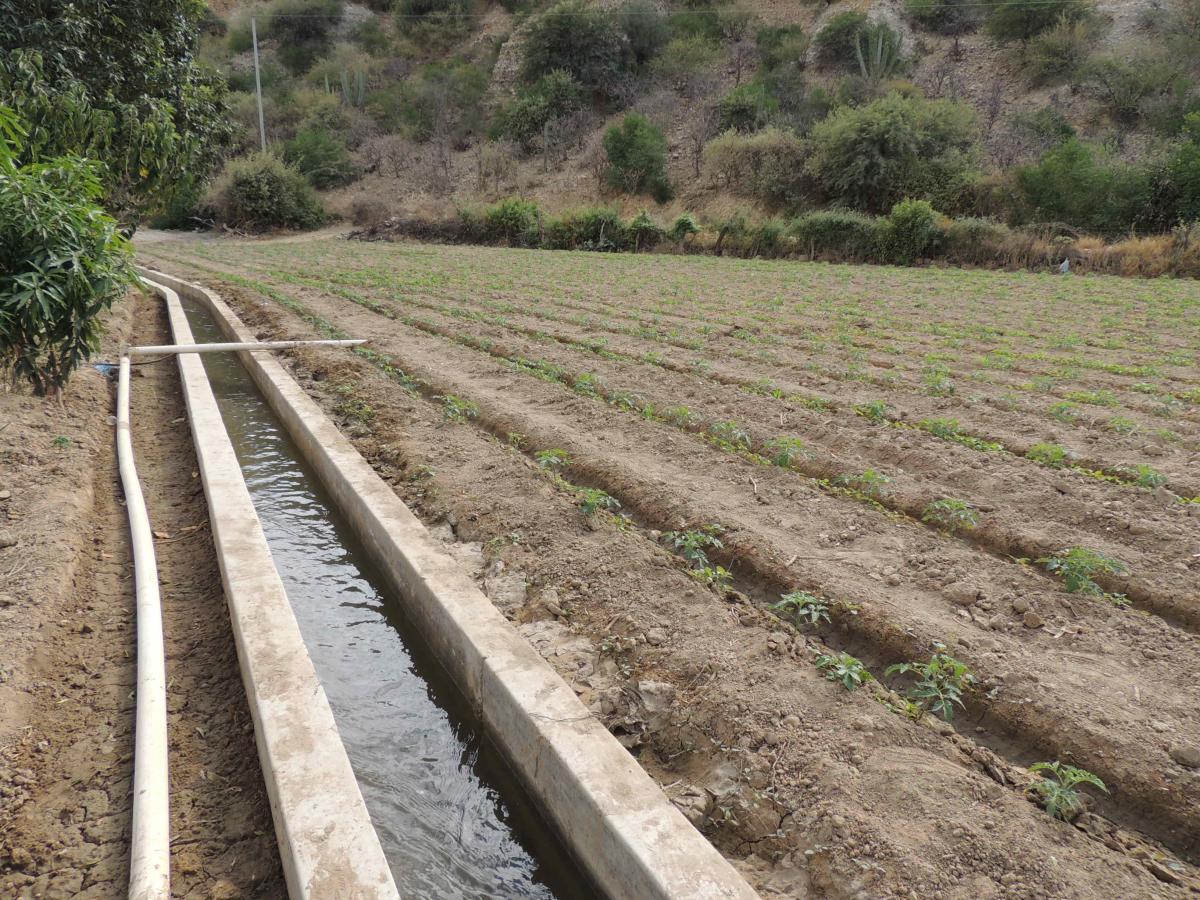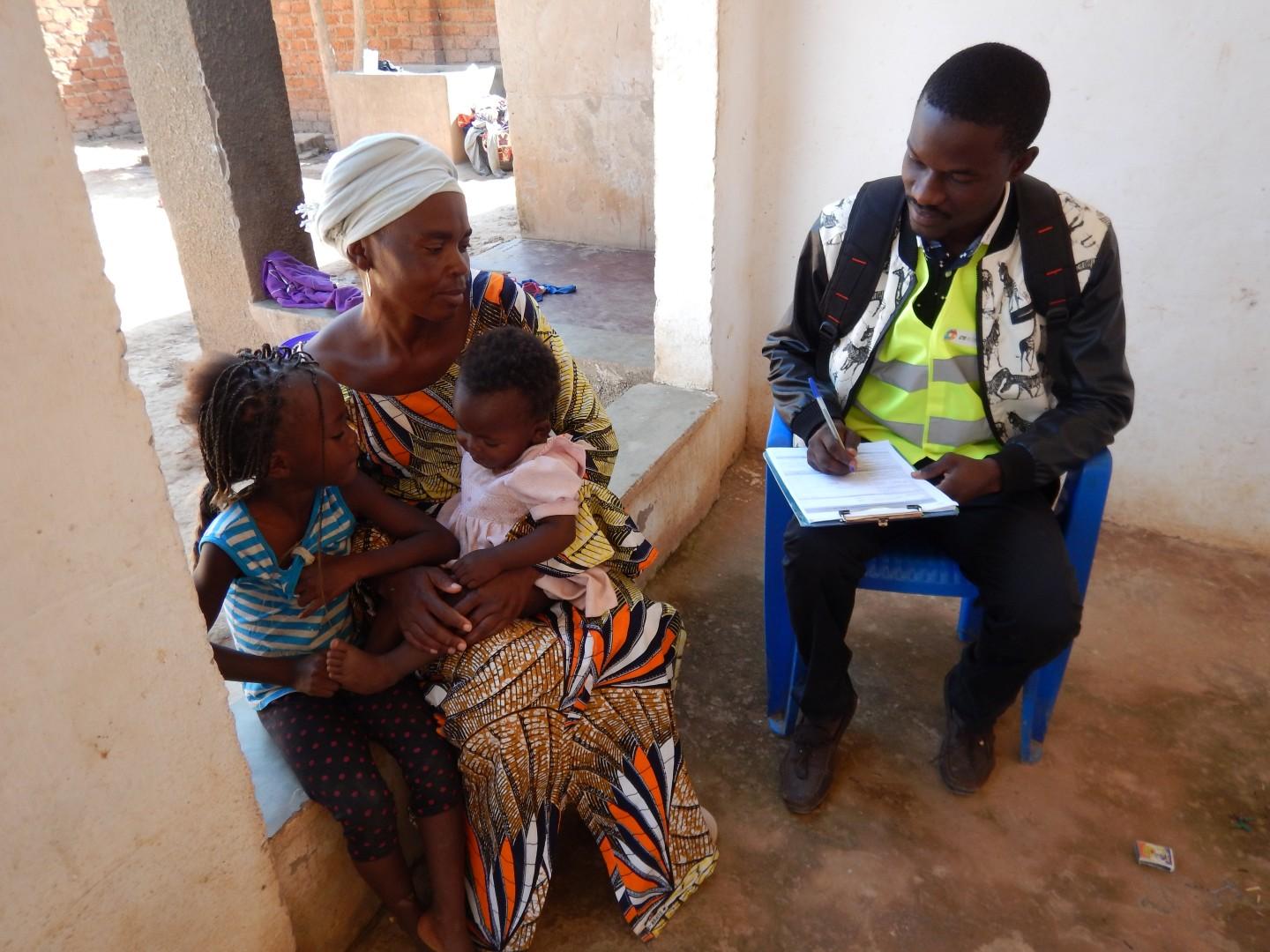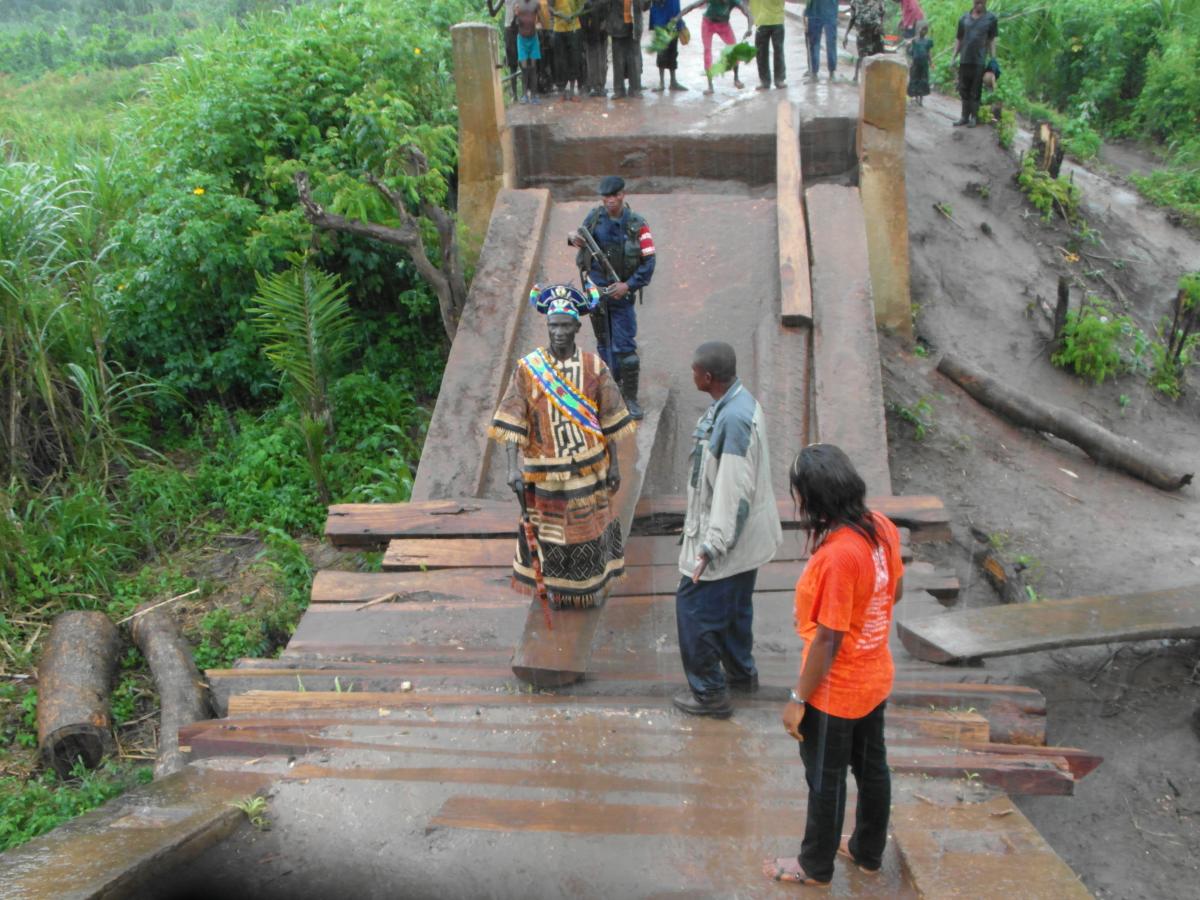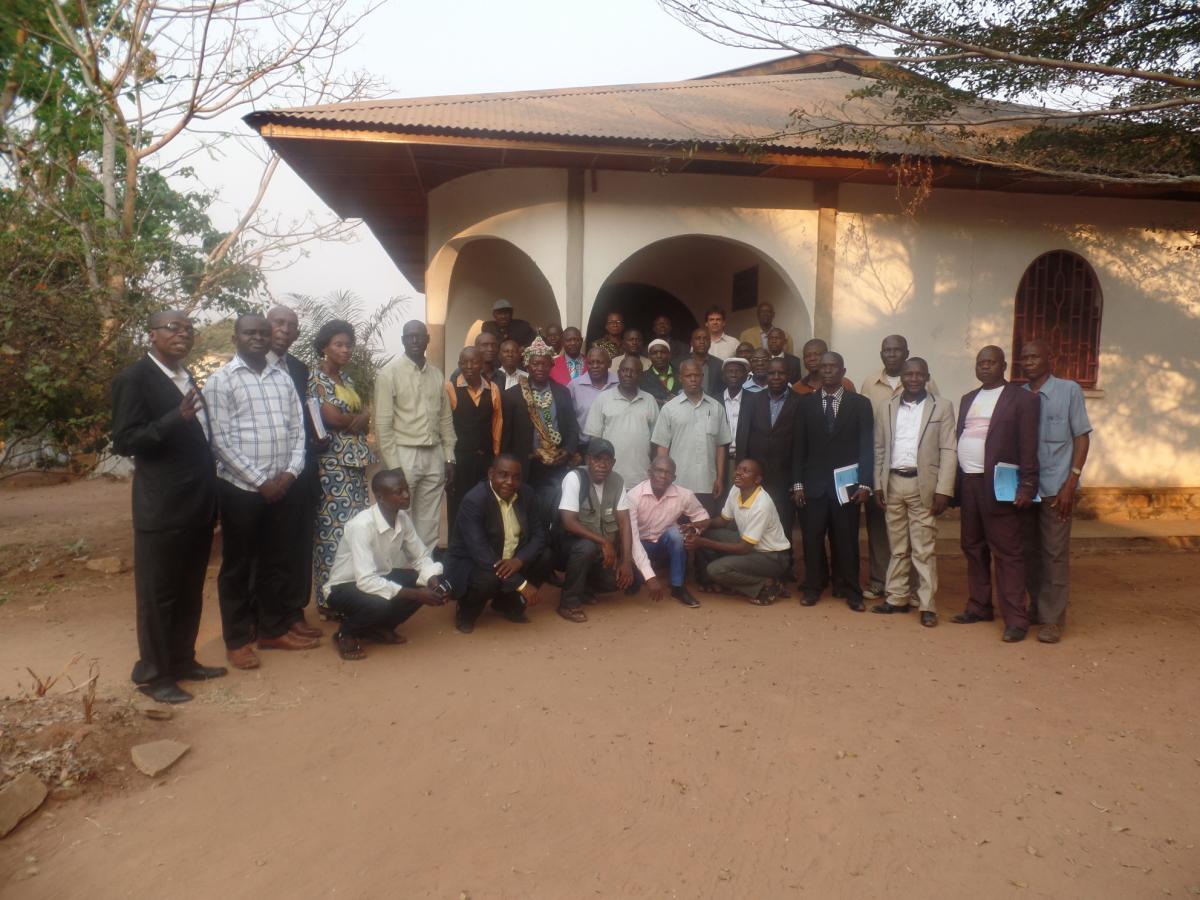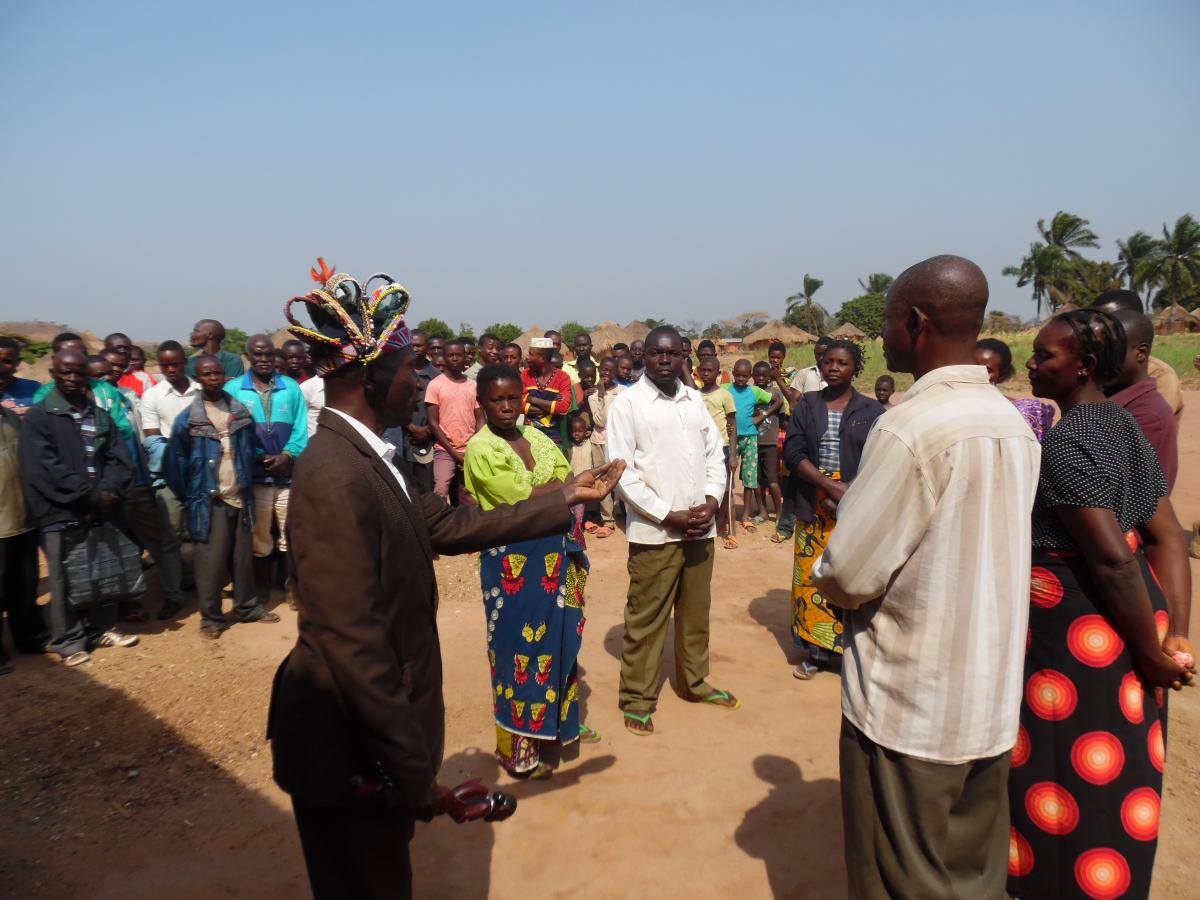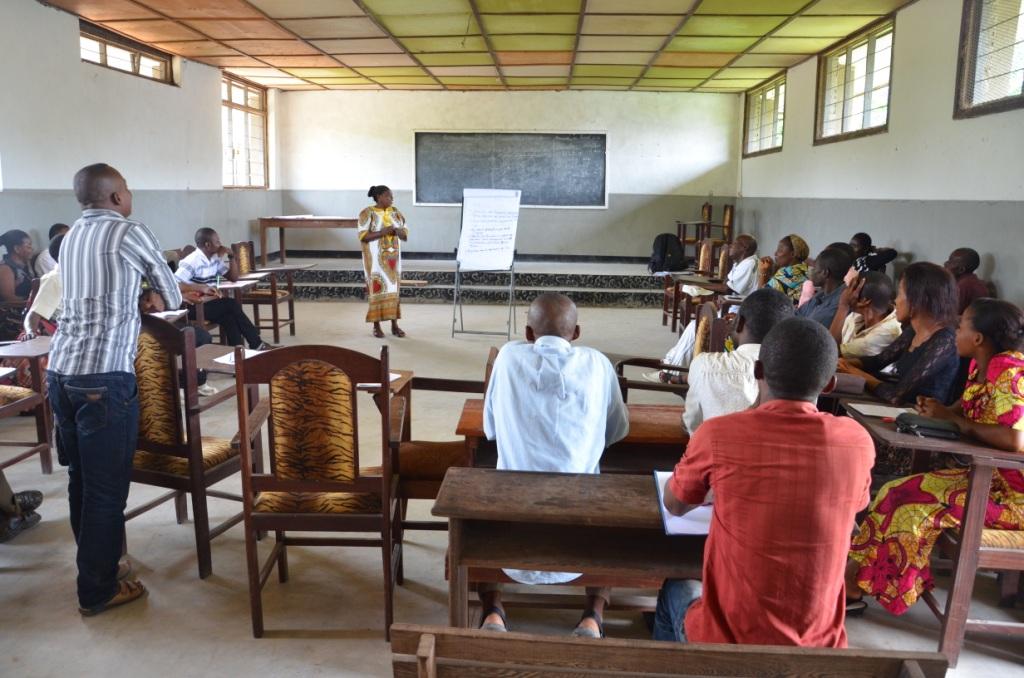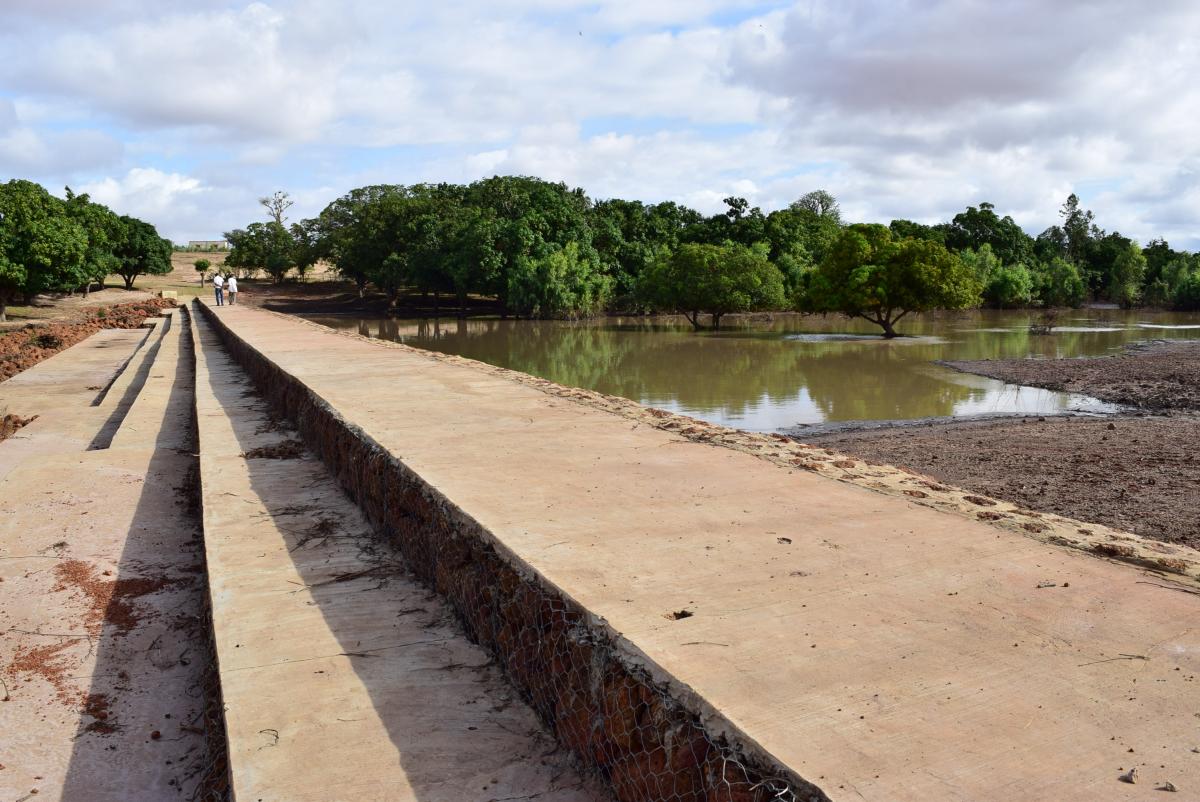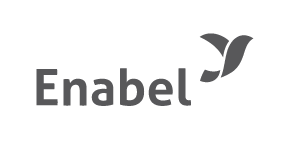Opzoeken
2385 - 2400 van 2520 nieuws bekijken
-

Training on local economic development
Carl THEUNIS | 09/08/2016
This is a video about the training of the Vice-Mayors in charge of Economic Affairs of all the districts in Rwanda. The training focused on Local Economic Development (LED). Participants learned more about what is LED, how to ensure proper planning of LED infrastructure projects, how to exploit local potentialities etc.The training took place in Kigali on 24-25 may 2016. It was organized by the Local Administrative Entities Development Agency (LODA) and supported by the Belgian Government in the framework of the Rwanda Decentralisation Support programme (RDSP) as well as the German Government through the KFW Development Bank.
-
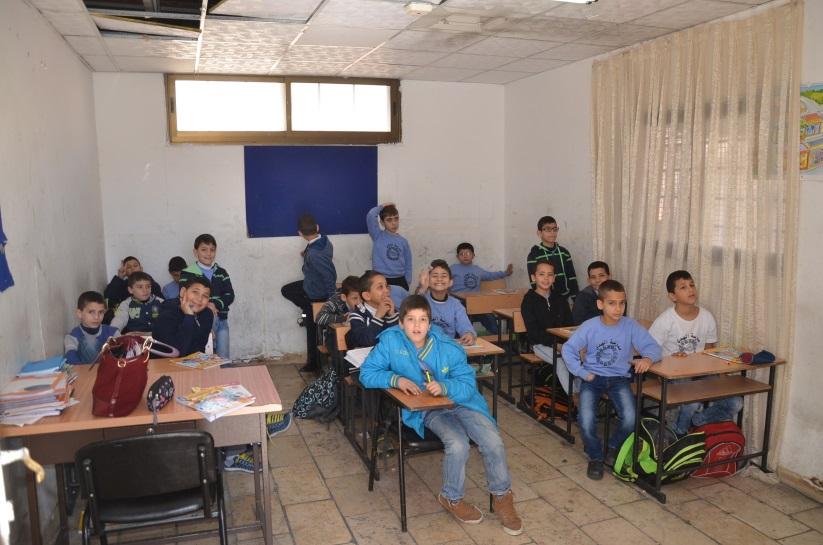
Palestinian education in Jerusalem endangered
Eva MORRE | 08/08/2016
A complex situation Ahmed lives in East-Jerusalem and together with his friends he goes to school in the Al Huda school in the Old City. He follows classes in one of the two container classes that are added on the roof of the old building. They don’t have a playground so, in between the classes, they play on the street. Also heating or air-conditioning are lacking in the building. During wintertime they follow classes with their jackets on, and when they start being cold, they go outside for a while, to jump up and down. When they are warmed up again, they return to the classroom. Ahmed is one of 85.000 children going to school in East-Jerusalem, the Palestinian part of the city. Due to the occupation and the unclear statute of Jerusalem, the more or less 200 schools in the East have large educational needs. A fragmented education system In total more than 85.000 Palestinian children follow classes in East-Jerusalem, in about 200 primary and secondary schools. These 200 schools are very fragmented. There are 74 private schools, 60 municipality schools, 46 schools managed by a trust under Jordanian tutelage (according to the ‘Waqf’ system), 7 schools of the United Nations (UNRWA), and 18 ‘Sakhneen’ schools, a type of recognized unofficial schools established as a response to the scarcity of public schools. The unclear statute of Jerusalem causes huge problems in the educational system in East Jerusalem. Limited number of building permits One of the major problems is obtaining building permits. Since the foundation of the Palestinian Authority in 1994, the creation of extra schools in East-Jerusalem has been a top priority, so far without great success. The number of Palestinian schools in Jerusalem is limited in number, building new schools is almost impossible due to a shortage of building lots destined for public buildings in East-Jerusalem. Also renovations are challenging due to the long and often complicated procedures to obtain building permits. Therefore, classes are generally packed and not adapted to the needs of the pupils, which leads to an environment lacking decent learning conditions. Many schools fall short of electricity standards, decent sanitation, heating in winter or air-conditioning against the summer heat. The lack of classrooms results in overcrowded classes. In some schools it is not possible for the students to be seated all at the same time. The precarious schooling conditions give rise to an increased school dropout rate, especially in secondary education where more than 5000 students fall outside the schooling system. At present, 36% of the children in East Jerusalem don’t finish school. In order to solve this problematic situation, the town now rents several buildings. Due to the shaky financial situation of most schools in East-Jerusalem, they are not capable of paying the rental fees themselves. Moreover, the rented apartments – that are redecorated as classrooms – are often not adapted to their new function. Also the acquisition of new buildings by donors and the international community is planned, but the purchasing process is complicated due to all administrative and legal obligations that have to be dealt with and due to the limited amount of available building lots. Finally, 5 buildings have been purchased over the last couple of years. Further on, the acquisition of 2 extra school buildings by the Islamic Development Bank and Norway is ongoing. Furthermore, different schools are being renovated, among others thanks to the Belgian Development Cooperation. In total, 9 schools, out of which 3 private schools, will be totally renovated in East Jerusalem during 2016. Many others are subject to small improvements, such as upgrading the electricity and sanitation, thanks to the help of different donors. What about the teachers? A second problem is the lack of qualified teachers. Especially for exact sciences, technology and English a shortage exists. There are multiple causes for this lack of teachers. First of all, for the inhabitants of the West Bank it is a challenge to commute to Jerusalem. In order to work in Jerusalem, they are obliged to ask a permit to enter Jerusalem. However, many permits are refused. They are not allowed either to move closer to work, as they are only authorized to travel to Jerusalem for work, but in the evenings they have to return to the West Bank. Staying overnight in Jerusalem is prohibited for them. Furthermore, life in Jerusalem is a lot more expensive than elsewhere in the West Bank, which decreases the actual value of their salary. This is partly compensated by an extra “Jerusalem-bonus” for teachers working in East-Jerusalem. Unfortunately, this bonus is not high enough to fully compensate the additional costs of the transport, the extra cost of living and the time that is lost while commuting. A third reason for the shortage of teachers is linked with the recognition of the Al Quds university. The Al Quds university is the most important university for Palestinians in Jerusalem, but its degrees are not recognised by Israel. Therefore, the alumni of, among others, the teacher training have major issues finding a job. A financial hole A third major obstacle is the financial pressure from the Israeli Ministry of Education. Currently, most schools in Jerusalem, also those in East-Jerusalem, receive financial support from Israel, as education is, according to international law, a basic right for everybody. However, from the Israeli side there are threats to abolish this support. This would be disastrous for the majority of schools in East-Jerusalem, to the extent that many fear that, in case no solution is found, by the end of 2016, no Palestinian education will be possible anymore in Jerusalem, due to financial reasons. Schools need to receive more financial and judicial support in order to continue their activities. A customized curriculum A forth issue is the battle for the choice of the curriculum. There are three different types of curricula that are used alongside each other in East-Jerusalem. Not only the Palestinian curriculum, but also the Israeli curriculum and a censured version of the Palestinian curriculum circulate and are used. Israel puts a large pressure on the Palestinian schools to no longer use the uncensored version of the Palestinian textbooks and curriculum. These would, according to Israel, incite hatred and violence. However, this idea has been rejected as incorrect by a study of the Council of Religious Institutions of the Holy Land[1]. In the censured version all references to the Palestinian nation are minimized and cities like Akko and Haifa, that were originally Palestinian cities, but currently located in the Israeli territory, are no longer mentioned. This is unacceptable for the Palestinian Authority as they see it as an oppression of the Palestinian identity, and they underline having the right to foster an own national identity. Schools that refuse to use either the Israeli curriculum or the censured Palestinian curriculum, risk losing their subsidies. Due to budgetary reasons, many private schools have already adopted the use of the Israeli curriculum. To address this situation, the Palestinian authorities call upon the schools to look for support in the local community, and to decently inform the parents about the consequences of the different curricula for the education of their kids. In this way, organisations like parent councils can exert pressure too. For a better future What is needed to overcome these problems is, first of all, a clear database where all needs and shortcomings of the system are listed, in terms of shortage of teachers, denied permits, shortage of classrooms, subsidies, but also other issues like safety standards. Secondly, there is a need to concentrate the investments in the education sector for the next couple of years in the most problematic areas, which makes East-Jerusalem, together with the Gaza Strip one of the top priorities. An additional area of concern is the safety of the students. This includes not only the safety standards at school, like the regulation of the electricity and proper sanitation, but also the security of the children on their way to and back from school. Currently 20% of the students and teachers have difficulties in reaching their schools. In view of the political situation and the many security incidents that have occurred in the old city of Jerusalem, this is definitely an issue to keep in mind. Furthermore, the fragmentation of the educational system should be diminished. As already mentioned before, there are different types of schools, which is the reason why some of them receive more support than others. For example, private schools in East-Jerusalem are often, wrongly, overlooked. To overcome these issues and together look for a solution for the future, a working group on East-Jerusalem has been erected, with the Palestinian ministries of education and higher education, of Jerusalem, of foreign affairs and all interested international donors. The Belgian Development Cooperation has different educational projects that focus on East-Jerusalem. At present, Belgium is, together with the Palestinian Authority, responsible for the donor coordination concerning education in the Palestinian Territory. Furthermore, The Belgian Development Agency (BTC) is currently renovating 9 schools in East-Jerusalem, among which also the Al Huda school (see picture) in the Old City. Additionally, the Belgian Development Cooperation gives budget support to the Palestinian ministry of education and higher education for the execution of their education plan. If all stakeholders work together and gather their forces, there is a chance that Ahmed and his classmates will be able, in a couple of years, to safely return to a renewed school with a customized curriculum taught by enthusiastic teachers. [1] Victims of Our Own Narratives?, Portrayal of the “Other” in Israeli and Palestinian School Books, 2013, Council of Religious Institutions of the Holy Land, http://israelipalestinianschoolbooks.blogspot.co.il/.
-
Un nuevo canal de irrigación en el municipio Omereque garantiza la seguridad alimentaria de 50 familias
Wietse FRICKEL | 04/08/2016
El Ministerio de Medio Ambiente y Agua (MMAyA), a través del Programa de Apoyo al Riego Comunitario (PARC) y con el apoyo de la Cooperación Técnica Belga (CTB), entregó un nuevo canal de irrigación al municipio cochabambino de Omereque, que beneficiará a 50 familias del lugar. La inversión de la obra asciende a más de Bs. 1,6 millones, co-financiada por la donación del Reino de Bélgica y recursos locales del Gobierno Autónomo Municipal. El canal, con una longitud de más de tres kilómetros, garantiza riego para 70 hectáreas, asegurando la productividad agrícola, la cual mejorará los ingresos económicos y garantizará la seguridad alimentaria de 50 familias. Además, esta obra cuenta con un programa de Acompañamiento y Asistencia Técnica que apoyará a los regantes de la comunidad en el mantenimiento, la operación del sistema y el mejoramiento del uso de los recursos naturales, incrementando sus rendimientos de cultivos bajo riego. Omereque, 18 de julio de 2016
-
Enquêtes de satisfaction
Julie CLAASSENS | 03/08/2016
Dans la cité Karavia à Lubumbashi, où le projet PRELUB établira un nouveau réseau électrique basse tension, des enquêtes sont menées auprès de 800 familles pour évaluer la satisfaction du réseau actuel. En dehors de ces enquêtes plus d'informations seront données sur l'éfficacité énergétique, telles que l'utilisation des lampes fluocompactes.
-
Le pont Kamoutambaye, un appui au désenclavement
Julie CLAASSENS | 03/08/2016
Situé à Ngomba dans la Province de Lomami, la réhabilitation de ce pont important permettra le désenclavement de toute la chefferie de Katshisungu, et coutera près de 200.000 USD. La cérémonie de lancement des travaux a eu lieu le mardi 27 juillet avec la participation du grand chef, entouré des chefs de groupement, des notables, ainsi que des femmes sages du royaume et la population locale. Le grand chef de Katshisungu, Monsieur Kabua a Baata, a pris la parole et a remercié la CTB pour avoir accepté de financer cette réhabilitation, qui permettra le rétablissement du trafic et contribuera certainement à la réduction de la pauvreté des populations de la zone. Ensuite, il a appelé les chefs des localités riveraines de sécuriser des matériaux de travail qui seront stockés. Enfin, il a demandé à tous les sorciers de la zone d’éloigner les bishishis, comme des serpents, des crocodiles et autres forces négatives, du site des travaux. C'est dans une ambiance de fête avec des pas de danse et des chants typiquement Kaniocks, que cette belle cérémonie s’est terminée.
-
Journée de d'échanges et de réfléxion
Julie CLAASSENS | 03/08/2016
Pour la première fois, un programme de développement a réuni les différents chefs de secteur des entités administratives décentralisées concernés par les interventions de désenclavement. Le programme PRODEKOR a organisé un atelier de travail sur la question de maitrise d’ouvrage locale à laquelle ont participé les différents chefs coutumiers des zones d’intervention. Trente-huit chefs de secteurs et grands chefs des chefferies de la province de la Lomami ainsi que du Kasaï Oriental ont pris part à cette journée d’échanges et de réflexion. Les échanges ont porté sur les responsabilités légales et administratives des chefs, mais aussi sur les devoirs pour une durabilité des réalisations, sur un respect de la réglementation et sur le financement des activités. A l’issue de cette rencontre, les participants se sont engagés pour une mobilisation des finances locales en vue de soutenir l’entretien des infrastructures de désenclavement (routes, ouvrages d’art et bacs) et pour une meilleure sensibilisation de la communauté pour le respect de la réglementation routière. Le représentant des chefs a grandement salué l’initiative et a fait remarquer l’importance du travail, mais surtout l'implication. Il a remercié le Royaume de la Belgique et la CTB, dans les efforts de soutien aux populations locales, qui contribuent majoritairement à la réduction de la pauvreté.
-
Les habitants au service du désenclavement
Julie CLAASSENS | 03/08/2016
Soucieux d’assurer une continuité de l’entretien des routes, le projet PRODEKOR compte surtout sur l’implication concrète des bénéficiaires. A cet effet, le programme accompagne la constitution des comités villageois de développement (CVD), qui se chargeront de la formation des comités locaux d’entretien des routes (CLER) sur les nouveaux axes en réhabilitation. Cette démarche vise à renforcer l’adhésion des bénéficiaires aux efforts de maintien de l’état des routes, les CLER étant composés par des personnes qui habitent dans les villages désenclavés. Ainsi, le programme a adopté une approche basée sur le dialogue et la participation tant du partenaire étatique, des autorités que des populations locales. Des rencontres sont programmées, ou tous les représentants communautaires sont présents, les chefs coutumiers étant les porteurs de voies. Outre l’échange d’information, le programme accorde une attention particulière à la dimension appropriation dans la constitution des CVD. Les CLER seront mis en place avant la fin des travaux de réhabilitation, évitant ainsi une dégradation des routes entre la fin des travaux par l’entreprise et les activités de l’entretien par les CLER. L'action est portée par les services techniques de l’administration, appuyée par l’équipe de communication du PRODEKOR. La photo ci-jointe est prise dans le Territoire de Luilu, où le chef coutumier s’adressait à la population et parlait de l’importance de leur implication pour la sauvegarde du patrimoine routier.
-
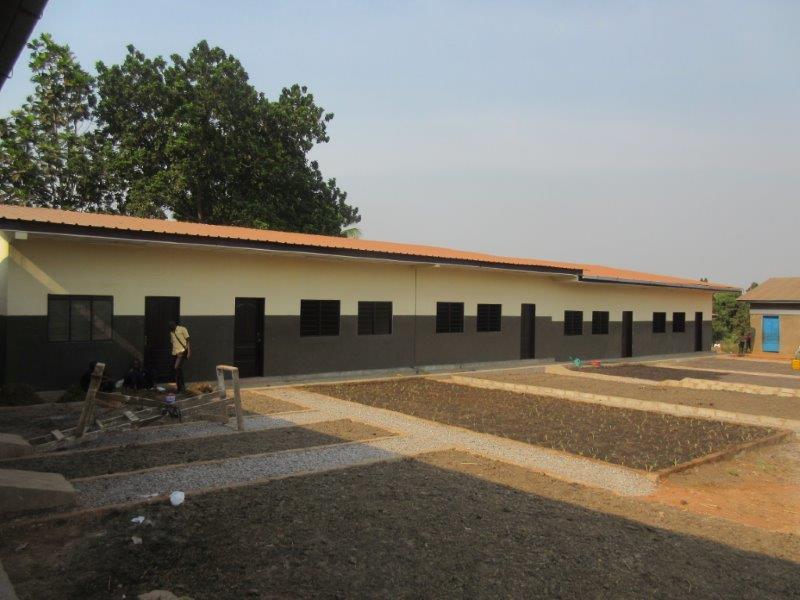
Une nouvelle école primaire
Julie CLAASSENS | 03/08/2016
Dans son souci d’appuyer le partenaire provincial dans la mise en œuvre de sa politique sectorielle et d’offrir un cadre adéquat aux autorités, EDUKOR réhabilite les bâtiments de la Division Provinciale de l’Education. Pour ça une école primaire a été construite en vue de pouvoir délocaliser les élèves qui jusqu’en juin 2016 suivaient les cours dans un environnement peu propice à l’apprentissage.
-
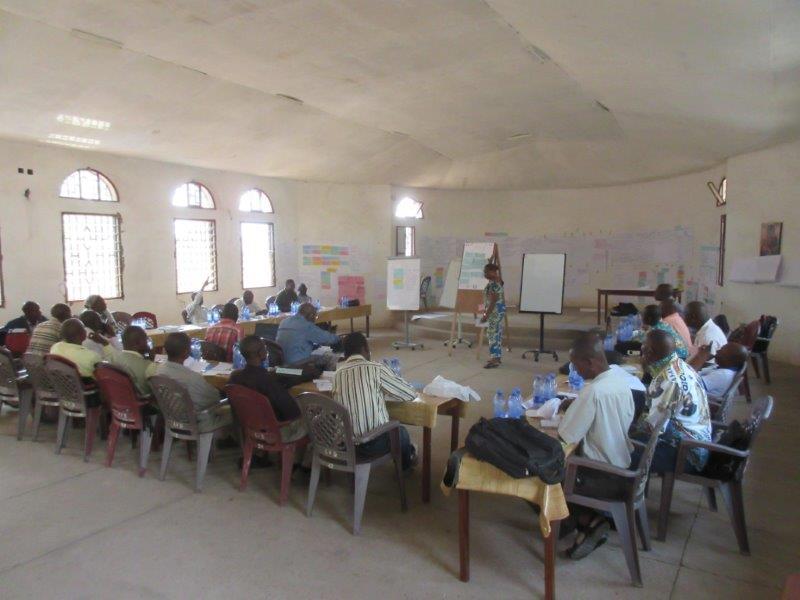
Formation en gestion scolaire inspirante
Julie CLAASSENS | 03/08/2016
Le Programme d’appui à l’Enseignement Technique et Professionnel au Kasaï Oriental a clôturé son premier cycle de formation en gestion scolaire. Au total, vingt-et-un inspecteurs sont formés pour constituer un noyau au sein des inspections principales provinciales du Kasaï Oriental et du Lomami. Cette série de formations consistait de quatre modules, correspondant aux quatre matières fondamentales dans la gestion d’une école technique et professionnelle. Elle s’est clôturée par le cycle en gestion pédagogique. Le grand objectif de cette partie était de renforcer les capacités des inspecteurs par rapport à la méthodologie qui vise une pédagogie de qualité. Cet objectif permettra aux inspecteurs de former les chefs d’établissements, en charge de la gestion au quotidienne les écoles. "Nous pensions depuis tout ce temps que notre expérience d’enseignant suffisait pour être des bons formateurs, mais nous venons de découvrir que sur le plan méthodologique nous avions encore de choses à apprendre’’, déclare l’Inspecteur Principal Provincial Adjoint, Alfred Gandu, en charge de la formation au Kasaï Oriental à l’un des participants. Monsieur Gandu souhaiterait que l’Inspection Provinciale s’inspirerait davantage sur les nouvelles méthodes apprises lors de cet atelier.
-
Les clubs d'écoute au service de la communication pour le développement.
Julie CLAASSENS | 01/08/2016
Entre avril et juin 2016, le chargé de communication de la CTB TSHOPO a procédé à un diagnostic participatif de quatre radios communautaires et d’une vingtaine de clubs d’écoute ciblés dans sa zone d’intervention. Les quatre radios sont réparties entre les territoires de Banalia, Isangi et Opala. Le Service National d’Information Rurale (SNIR) a aussi été impliquée dans cette activité.L’objectif était d’identifier les besoins réels des radios et clubs d’écoute perçus comme partenaires potentiels en vue d’un appui approprié. La finalité de cet appui est de promouvoir la communication pour le développement dans les trois composantes du programme provincial: le Programme de Développement Agricole dans la Tshopo (PRODAT), le Programme de Désenclavement de la Tshopo (PRODET) et le Programme d’Appui à l’Enseignement Technique et à la Formation Professionnelle dans la Tshopo (EDUT).Il ressort du diagnostic des radios qu’elles fonctionnent dans l’illégalité. Les unes n’ont pas de statuts, les autres ont des statuts non légalisés. Elles émettent sur une fréquence qui n’a pas été attribuée par l’autorité compétente. Leur gestion est mauvaise parce que les organes de gestion sont soit inexistants soit non opérationnels. Journalistes, animateurs et techniciens n’ont pas reçu une formation suffisante. Toutes ces radios émettent moins de six heures par jour pour la simple raison qu’elles manquent souvent du carburant pour faire fonctionner leurs générateurs. Elles n’ont pas de grilles de programmes qui prennent suffisamment en compte les problèmes de la communauté. Le principal point positif commun aux radios est qu’elles ont un rayon de couverture assez important entre 100 et 150 km. A noter aussi qu’elles ont le monopole dans leurs lieux d’implantation. Quant aux clubs d’écoute, quelques-uns ont suivi une formation sur leur mission, comme des clubs Dimitra dans le territoire d’Isangi. Mais ces derniers se confondent facilement avec les comités villageois de développement. D’autres n’ont jamais suivi une seule formation et ne connaissent pas très bien leur rôle au sein de la communauté. Les difficultés qu’éprouvent les radios à émettre régulièrement ont une répercussion sur le fonctionnement des clubs d’écoute. L’exercice du diagnostic participatif sera suivi de l’élaboration d’un plan de renforcement des capacités qui prendra en compte les aspects matériels et techniques
-
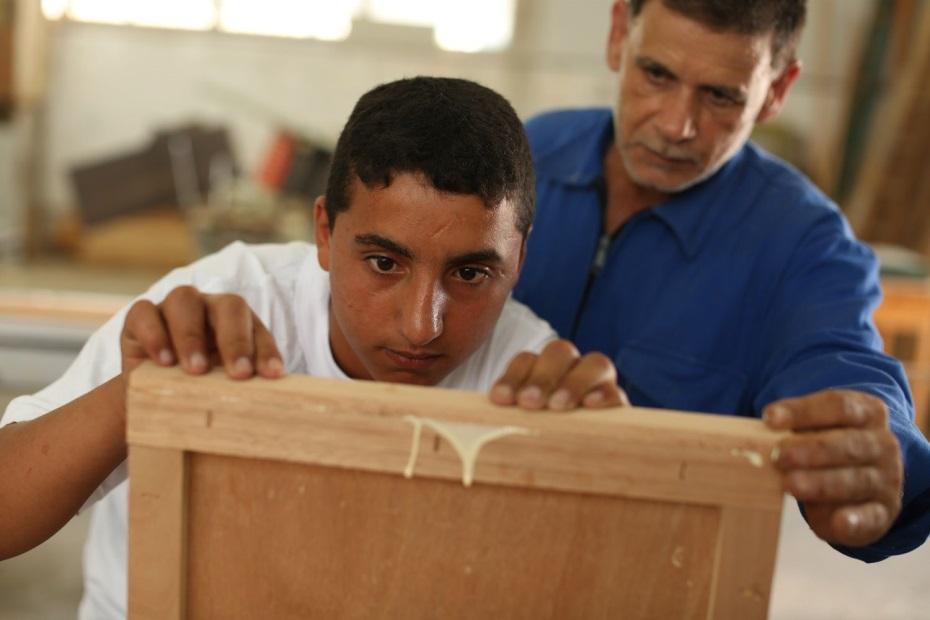
TVET summer camps – TVET for our future
Eva MORRE | 01/08/2016
Rising unemployment, in particular among youth, with figures up to 50% in the Gaza Strip, is a major cause of poverty. Many young people, even with a degree, cannot find a job. At the same time employers complain that they cannot find the people with the right competences to work in their companies. Youngsters with technical skills are in high demand in Palestine. Technical and Vocational Education and Training (TVET) should therefore be the best choice to find a job. In reality most young people opt for the traditional academic stream, often having difficulties finding a job after graduation, notwithstanding excellent school results. To tackle this paradox and to reduce unemployment in Palestine, the Belgian Development Agency and Islamic Relief Palestine have now, in cooperation with the Ministry of Education, organised the first TVET summer camps ever in the Gaza Strip, with the aim of making TVET education more popular. The TVET summer camps take place in three different TVET institutions in the Gaza Strip. They aim to change the negative attitudes towards TVET and increase the enrolment percentage at TVET centres and schools. The idea is to give the students enrolled in general education a chance to be introduced to the TVET education system. In total, 210 students from tenth grade participate in the summer camps. At every institution they are divided in 4 separate groups of 17 students each. During 6 days they attend 3 different, interactive TVET workshops, interspersed with sports and art. Thanks to the TVET workshops, the participants can practice different occupations as the TVET workshops tries to simulate a real working environment. Thanks to the summer school, the students gain some basic technical competences that enable them to make a more thought through study choice. "The camp gave me the opportunity to learn more about graphic design and I was able to produce nice products using the Photoshop program.” Kareema (participant at Gaza Girls TVET School) The summer camps also include trips to companies, factories and workshops related to the subjects practiced by the students, which gives them the opportunity to interact with the employers and learn more about the different occupations. The products that were produced during the summer camps by the students have been presented in a central exhibition during the closing ceremony of the TVET camps held on the 31st of July 2016. The camps also include interactive sessions between the students and their parents in order to change the attitude of parents towards TVET so they would support the choice of their children in case they want to enrol in the TVET education system. Kamal (parent): "My son participated in the camps, he joined Deir Al Balah Industrial School, then he decided to select TVET to be his career and he registered in the school”. The Ministry of Education will be asked to conduct a tracer study at the end of next school year to identify the percentage of participants in the summer school that have decided to enrol in TVET.
-
Premières pluies à Thiès
Marcella PASOTTI | 28/07/2016
La saison hivernale a désormais belle et bien démarré au Sénégal. Grace aux premières pluies, tombées vers mi-juillet, les bassins construits par le BARVAFOR ont commencé à jouer leur rôle. Cette image montre la digue semi-filtrante réalisée dans le village de Tattène Teup Dal, dans la commune de Notto (Thiès). Ce type d'ouvrage a pour fonction principale de favoriser la recharge de la nappe phréatique pour permettre un accès à l’eau d'irrigation plus facile et durable. La digue arrête la course des eaux de ruissellement qui, progressivement, s’infiltrent dans le terrain jusqu’à atteindre la nappe phréatique, en la faisant remonter. Dans la commune de Notto, le BARVAFOR a aussi réalisé deux autres digues semi-filtrantes et un bassin de rétention.Pour plus d’images, veuillez visiter la gallérie photo du projet.
-
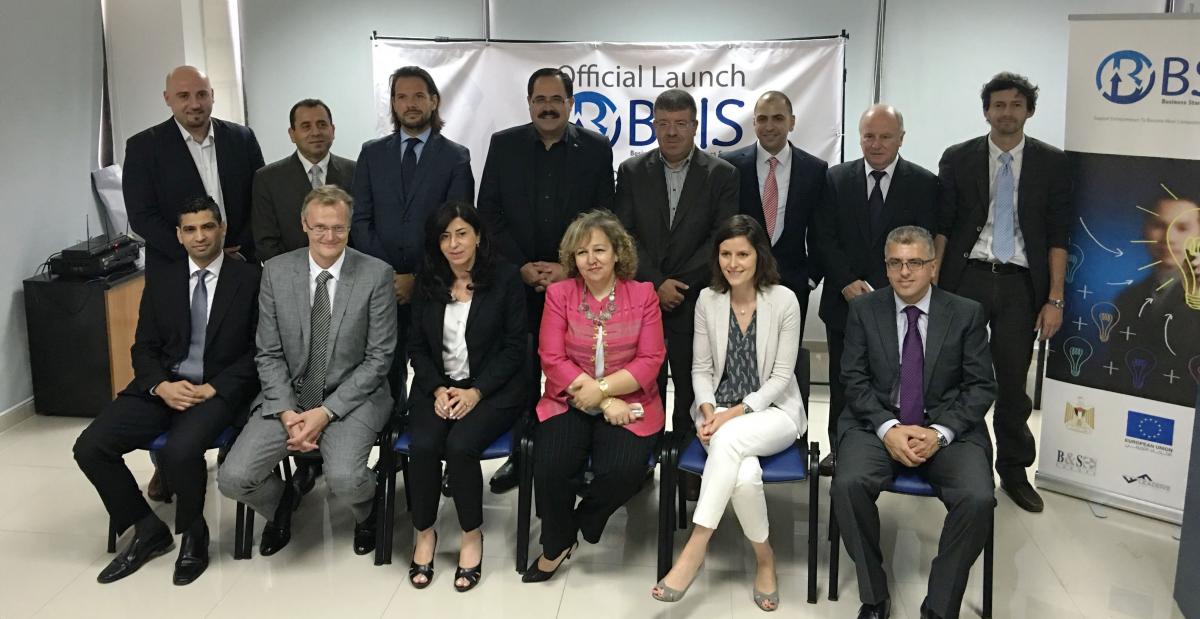
Official Launch of BSIS project
Eva MORRE | 25/07/2016
On the 25th of July, the EU launched a new programme to support Business Start-up Incubators in Palestine. The programme will be implemented by the Belgium Development Agency (BTC). The Business Start-up Incubators Programme aims at helping entrepreneurs to translate their ideas into new businesses. It will enhance entrepreneur's skills to make their start-ups more competitive and financially sustainable. The programme will support start-up incubators in Nablus, Ramallah, Bethlehem, Hebron, East Jerusalem and Gaza. Incubators provide entrepreneurs with shared office space and resources, business advice, training and coaching. Activities will include institutional capacity building to incubators, awareness raising on entrepreneurship, business training and coaching, information sessions and creation of a digital platform on access to finance. Women associations and youth organisations will be supported. In addition, in order to improve the quality of business support services to business start-ups, 30+ Small Business Advisors will receive training to prepare them for international accreditation. A proposal for national accreditation of business advisers will be developed. Small business services will be promoted through a Business Voucher Scheme for business start-ups and Micro, Small, and Medium Enterprises. Finally, a pool of 20+ mentors will be trained to provide business coaching to incubatees / start-ups. “Supporting the creation of new companies is essential to promote private sector led sustainable development and employment. This is one of the main priorities of the EU support to the Palestinians”, said Riccardo Rossi, Head of the Economic Development, Trade, and East-Jerusalem Programme section in the Office of the EU Representative (West Bank and Gaza Strip, UNRWA). Her Excellency Abeer Odeh, the Minister of National Economy, said "the establishment of business incubators can form a protective shield and protect projects emerging and incubated from various aspects through support of all kinds to be able to start and grow and succeed. Therefore, the program's focus on spreading awareness about entrepreneurship and economic empowerment in society must receive all support from us and our partners in the eco-system, especially that this project comes within the framework of the Palestinian national development plan (2014- 2016). " BTC Resident Representative, Mr. Dirk DEPREZ, added "BTC aspires through its programs in Palestine to support state building and economic prosperity for the Palestinian People. The Business Incubators project is complementary with our support to the Technical and Vocational Training and our support to the local economic development. " At the end of the programme, 120 start-up businesses are expected to be operating and be fully supported in the local market. Background A vibrant private sector is critical in creating prosperity and meeting the employment needs of a rapidly growing Palestinian population. High employment also assists in broadening the tax revenue base, which is a necessary requirement for funding essential public services and infrastructure. The EU supports initiatives that promote inclusive, sustainable, private sector-led Palestinian economic development. The Palestinian Authorities have established an Educational Developmental Strategic Plan to improve the quality of education. BTC supports different components of this plan. We improve infrastructure and create a healthy and safe educational environment. We also aim at supporting foundational reforms and new policies in education. Through capacity building we try to improve the quality and labour market relevance of technical and vocational education and training (TVET) by developing Work Based Learning schemes and entrepreneurship programs through Private Public Partnerships.
-
Emergences des organisations pastorales et leur rôle dans le processus de gestion de la vallée de Tarka au Niger.
Stephanie EECKMAN | 21/07/2016
HABIBOU, Ibrahim est cadre du Ministère à la Direction du développement Régional et local (DDRL) au Niger. Il a fait ses études de Doctorat de 2010 à 2016 à l’Université de Liège à la Faculté des Sciences au Département de Sciences et Gestion de l’environnement. Le titre de sa thèse est « Etude de l'émergence des organisations pastorales et leur rôle dans les processus de gestion partagée de la vallée de la Tarka dans le département de Dakoro (centre sud du Niger) ». Ibrahim a fait le choix de ce thème du fait qu’au Niger l’élevage et les problématiques foncières sont des enjeux majeurs. En effet la réduction des espaces pastoraux à cause de l’augmentation des terres de cultures est source récurrente de conflits fonciers entre les éleveurs et les Agriculteurs au Niger. Il a été sélectionné en 2010 par la CTB du Niger dans le cadre du programme des bourses bilatérales hors-projets. Il a soutenu sa thèse le 15 mars 2016 à Arlon pour l’obtention du grade de Docteur en Sciences de l’environnement. Son travail de thèse lui permettra de renforcer les capacités des ressources humaines pour faire une analyse des dynamiques territoriales dans cet écosystème pastoral. Ce travail est également susceptible de servir de base pour la mise en place de projets de développement des communautés pastorales, et de contribuer à l’accompagnement de la politique de développement au Niger.
-
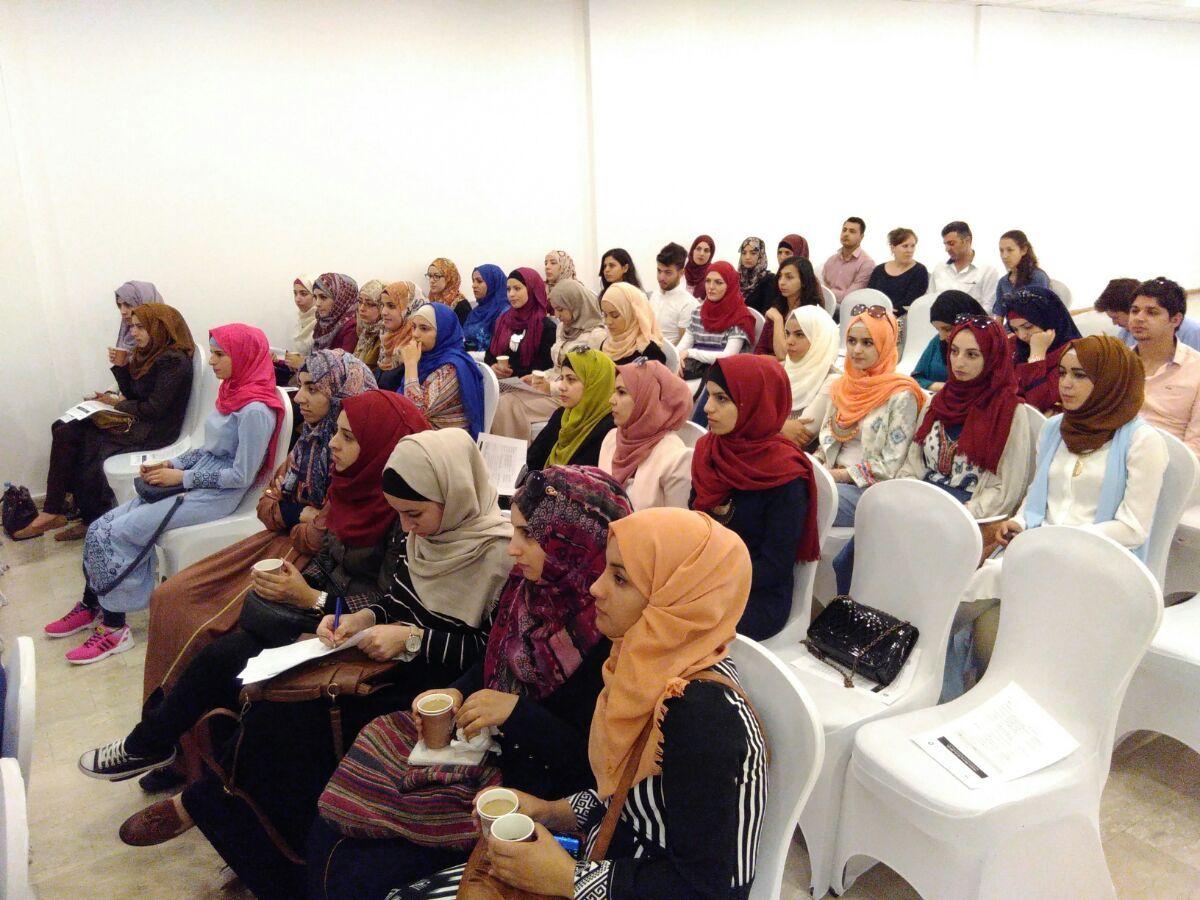
Summer School: Regenerating Palestinian heritage
Eva MORRE | 20/07/2016
Regeneration of heritage sites is a quite recent phenomenon in the West Bank. When regenerating cultural, natural or historic heritage, attention is paid not only to the structures themselves, but also to the socio-economic and cultural value the heritage can have for the population. Therefore, a focus on sustainable management of the sites is very important. In order to create awareness about the importance of regeneration and to support capacity building, the Belgian Development Agency (BTC) in cooperation with the Ministry of Local Government have organised a Summer School for students in urban planning and architecture. The Summer School will develop a concrete exercise in spatial planning, urban regeneration and the rehabilitation of historic buildings in selected villages as a “training on the job”. In total 45 students participate in the month long summer course, starting on the 20th of July. Among them 30 students are Palestinians, while 6 students are international students. They are supervised by international experts and teaching assistants and professors from three different Palestinian universities. "The summer school gives me the opportunity to practice in the field what I have learned at university" - Lina, participant in the summer schoolIn every region students target a different aspect of regeneration. In the North students mainly focus on the landscape in Sabastiya, Burqa and their surroundings, under the supervision of Al Najah University. The exercise concerns the spatial planning for the conservation and revitalization of historic settlements, and the rehabilitation of the cultural landscapes to connect spaces with economic assets. The students working in Birzeit University work on urban planning and design of the historic centre of Deir Ghassane. Conservation and revitalization will be part of the research and appropriate guidelines and bylaws for regeneration of urban fabric will be addressed. The students in the Palestine Polytechnic University (PPU) of Hebron at last focus on the rehabilitation of historic architectural ensembles in As Samu’. The students, guided by the teaching assistants and professor of the PPU define strategic interventions to implement regeneration strategies. At the end of the summer school these three perspectives will be collected in order to create a manual that helps the Ministry of Local Government and Municipalities to start up regeneration projects. Here you find more in-depth information on the Summer School.
